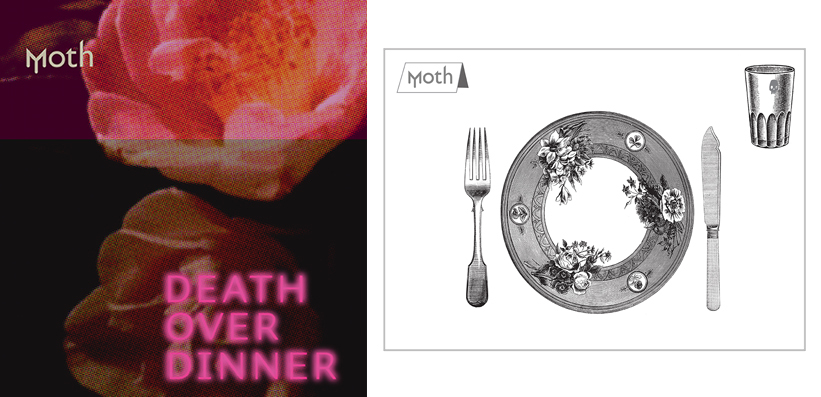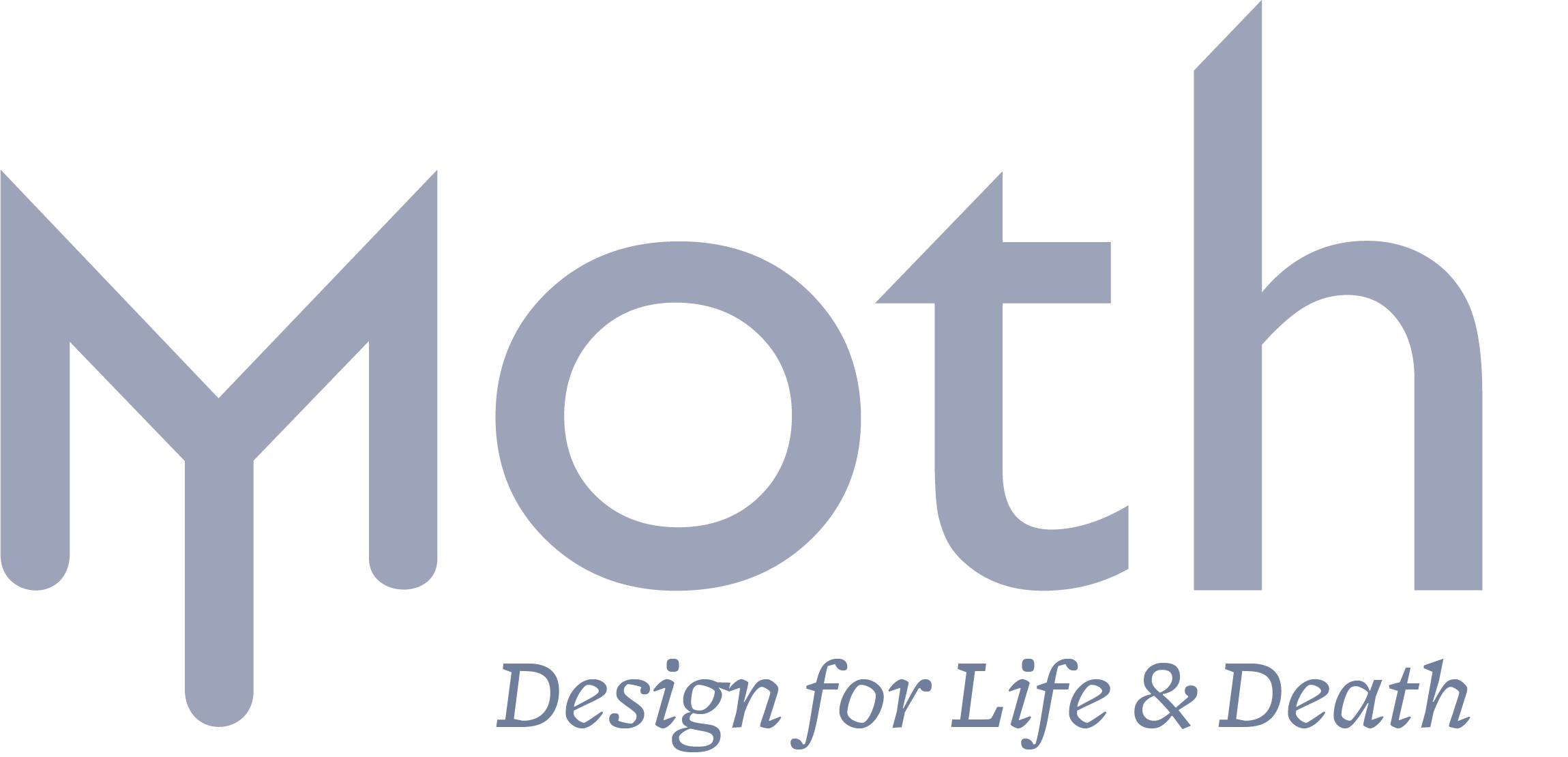Symbols of Death
[The Emotionalisation of Graphic Symbols]
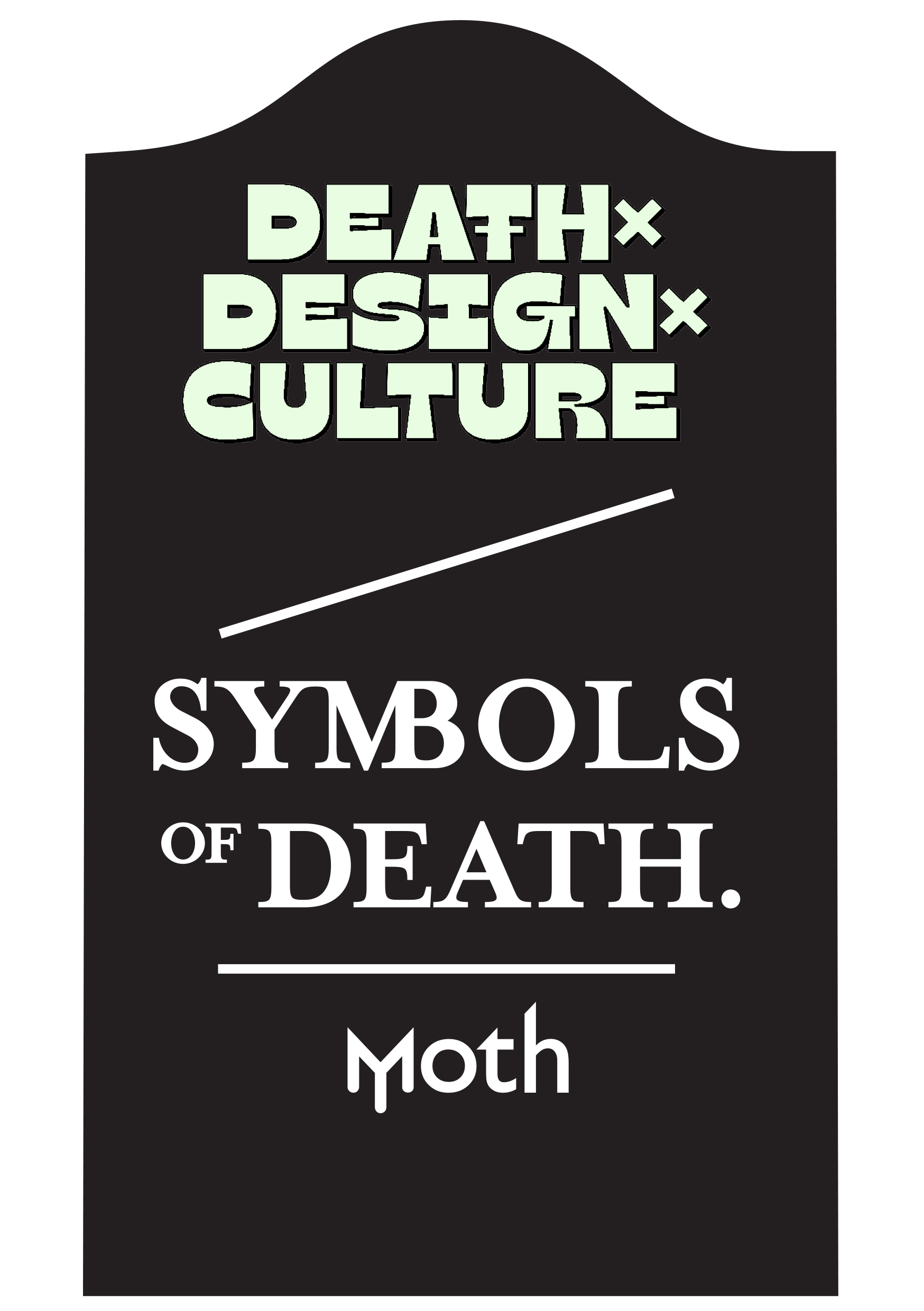
We wish to express our delight and gratitude to all those who have contributed to this project and shared with us their thoughts, insights and symbols. We welcomed a diverse range of submissions which communicated both personal grief as well as collective solidarity and empathy in our social-cultural relationships.
Thank you.
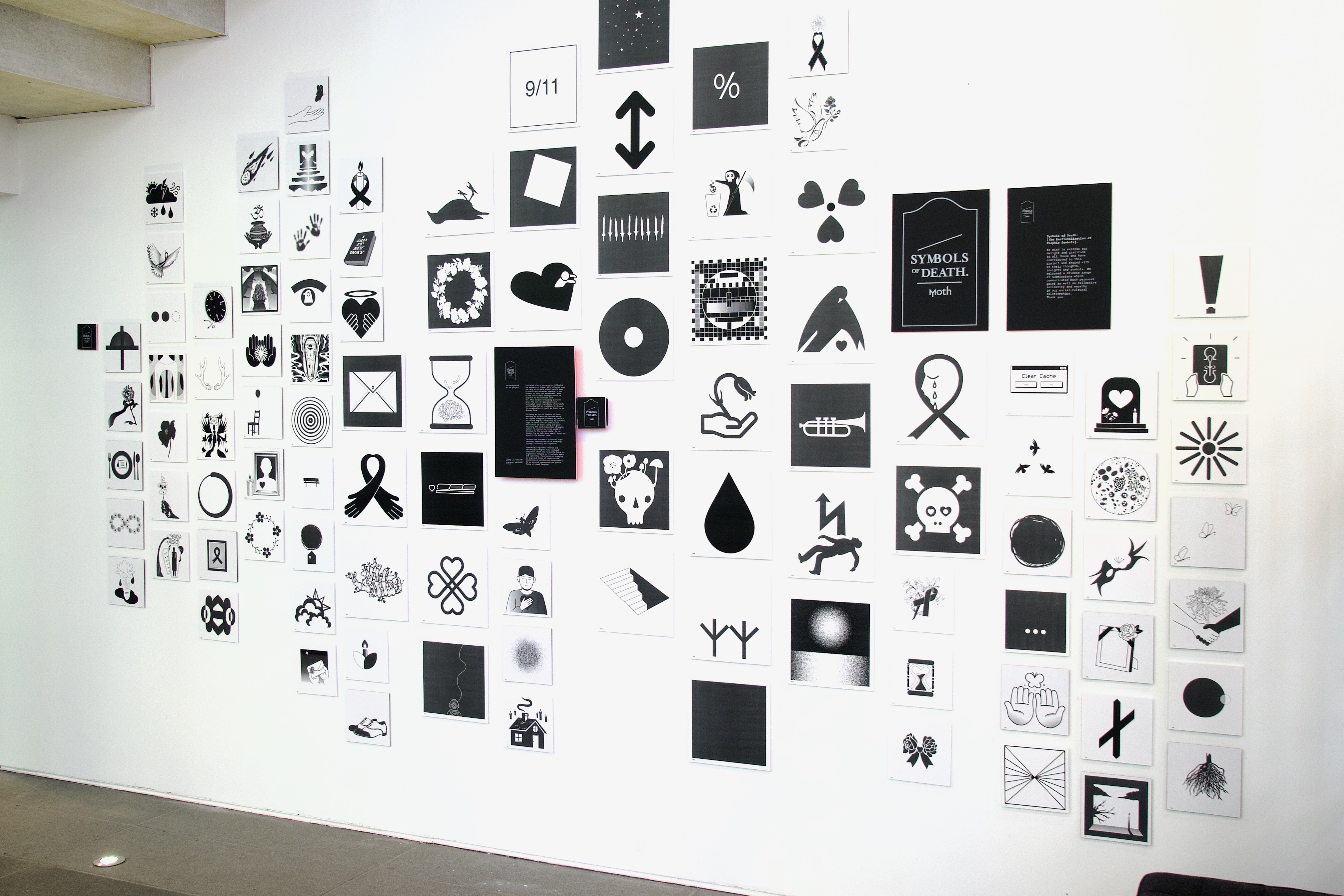
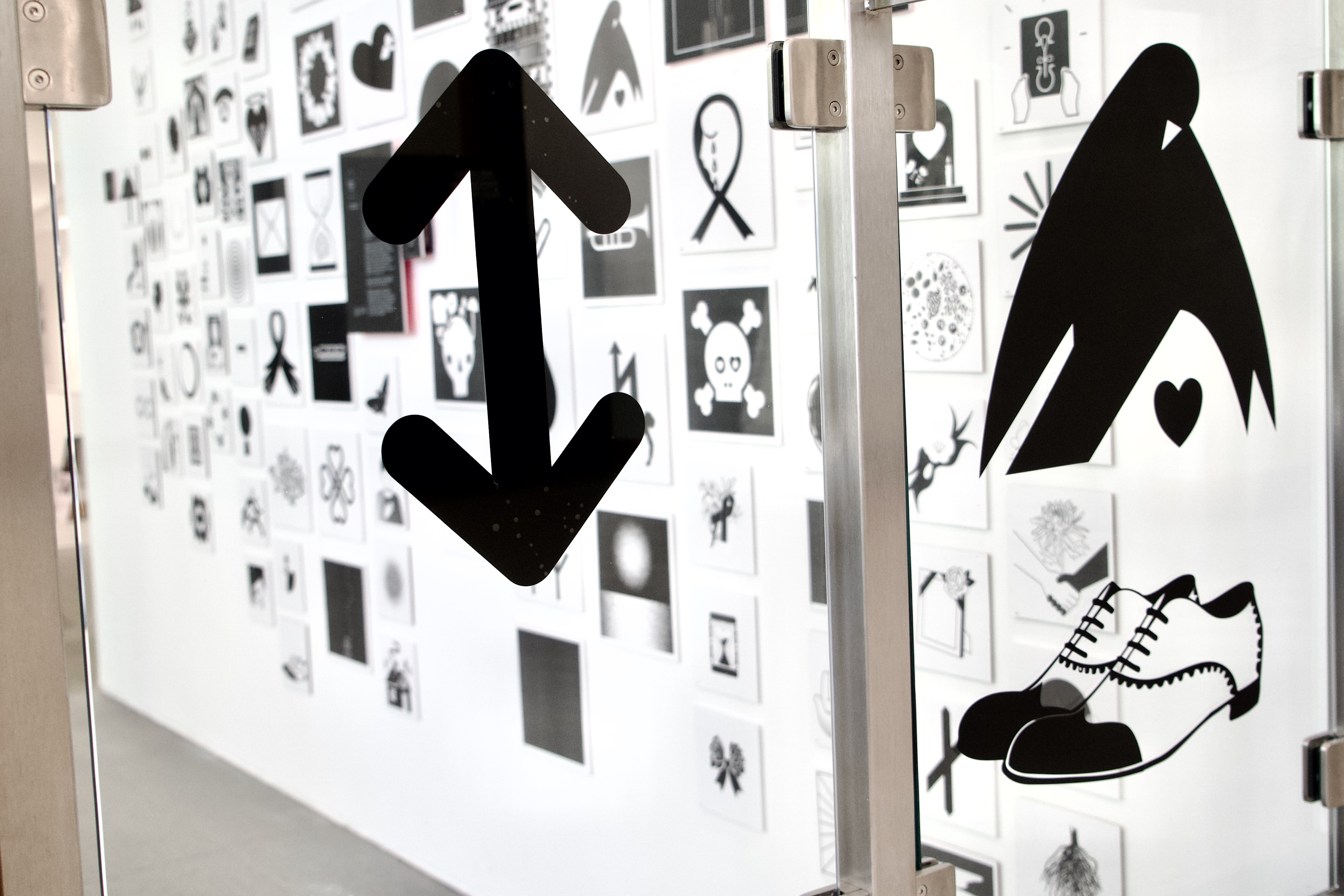
Symbols of Death:
[The Emotionalisation of Graphic Symbols]
The Background to the project
Initiated after a conversation following the massacre at Utøya, MOTH reflected upon the lack of suitable visual symbols used to articulate universal sympathy in the context of death and bereavement. Most of the social media messages posted in response to the massacre used
the 🖤. This prompted inspiring questions about the lack of appropriate and meaningful visual signifiers of mortality and highlighted our inability to discuss the complexities of death as freely as we discuss love.
Following an initial Symbols of Death workshop at Falmouth we invited design colleagues alongside students to submit work for an exhibition to take place at the DEATH x DESIGN x CULTURE: RADICAL RE-IMAGININGS FOR THE END OF LIFE, conference, 4-6 September 2024, at Falmouth University, UK.
The Brief To create a collective digital vocabulary of pictorial signs to articulate and communicate the nuances of death, dying and grief. Utilising the emotionalisation of graphic symbols to express our inner world of feelings to the outside world. To re-imagine how we talk about death, dying and grief in the digital realm.
Lexicons and systems of pictorial signs represent democratisation of knowledge through [cultural] participation. Overcoming linguistic barriers and reflecting divergent socio-cultural influences which are constantly being re-negotiated. Helping us to navigate space and each other. Functioning or engaging as universal forms of communication [rejecting or reinforcing stereotypes?]. Or as personal expressions and poetic forms of visual language.
Sander. G. (2014) Otto Neurath. Eine politische Biographie. Wien/Vienna: Zsolnay


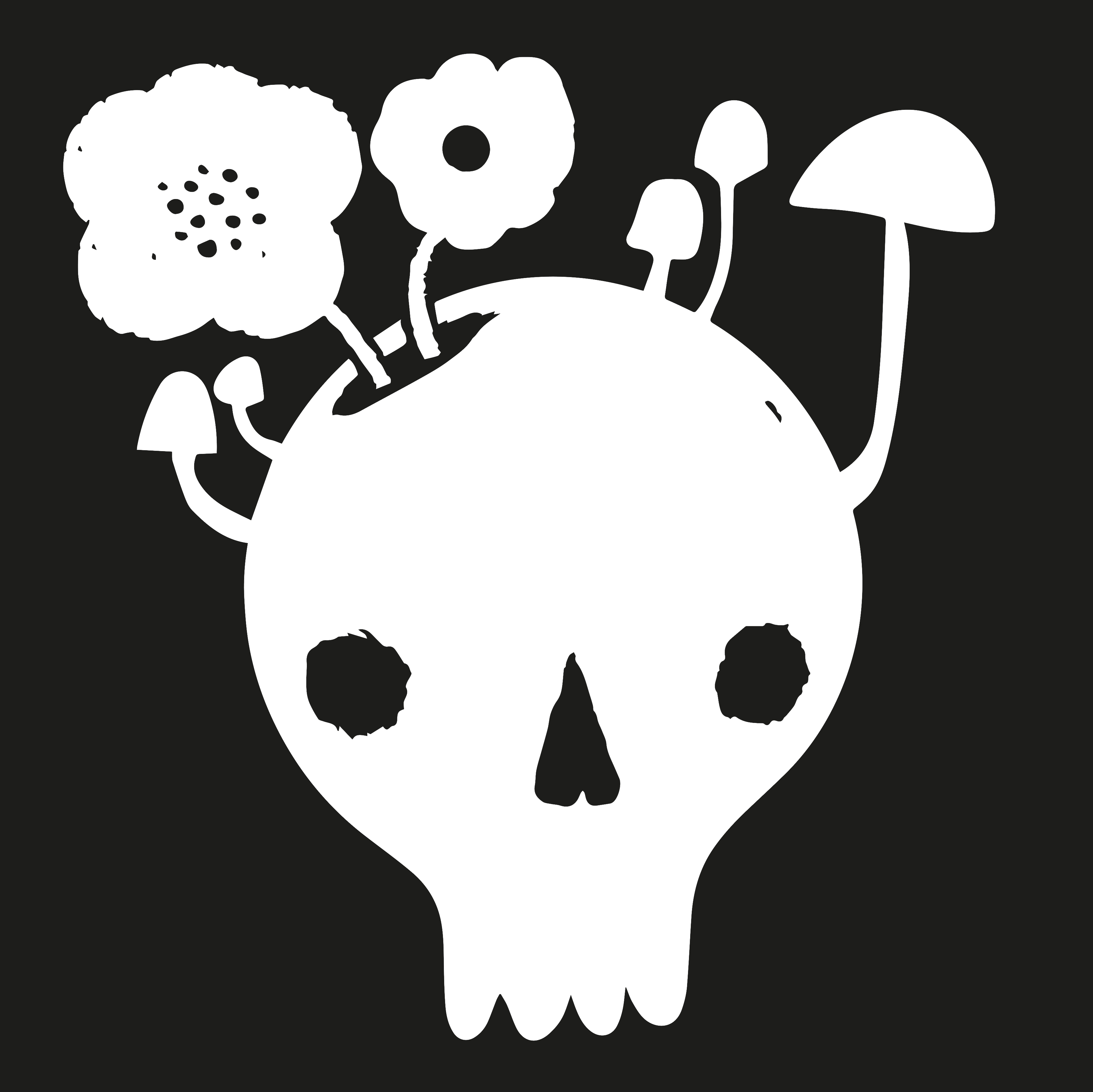
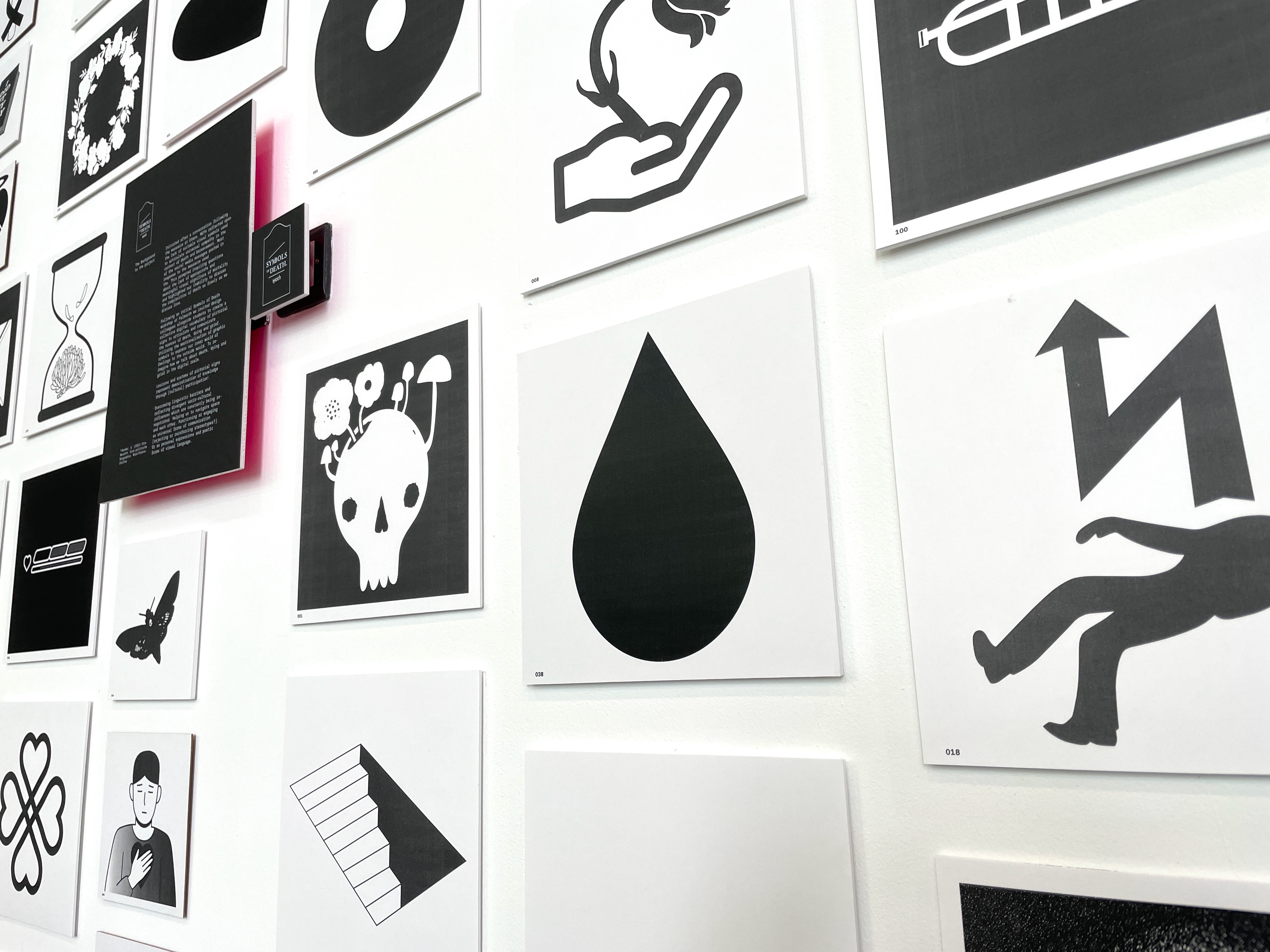
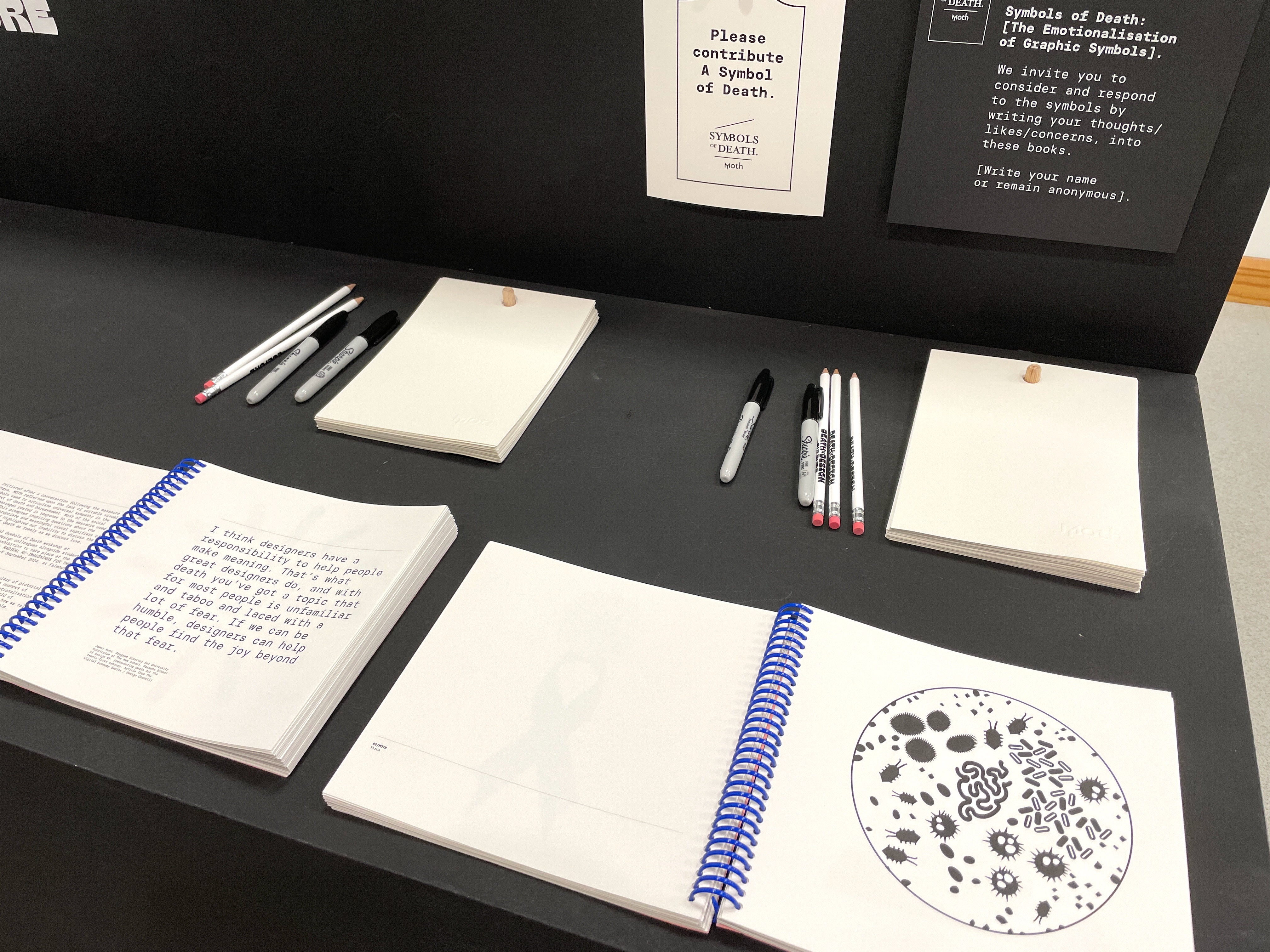
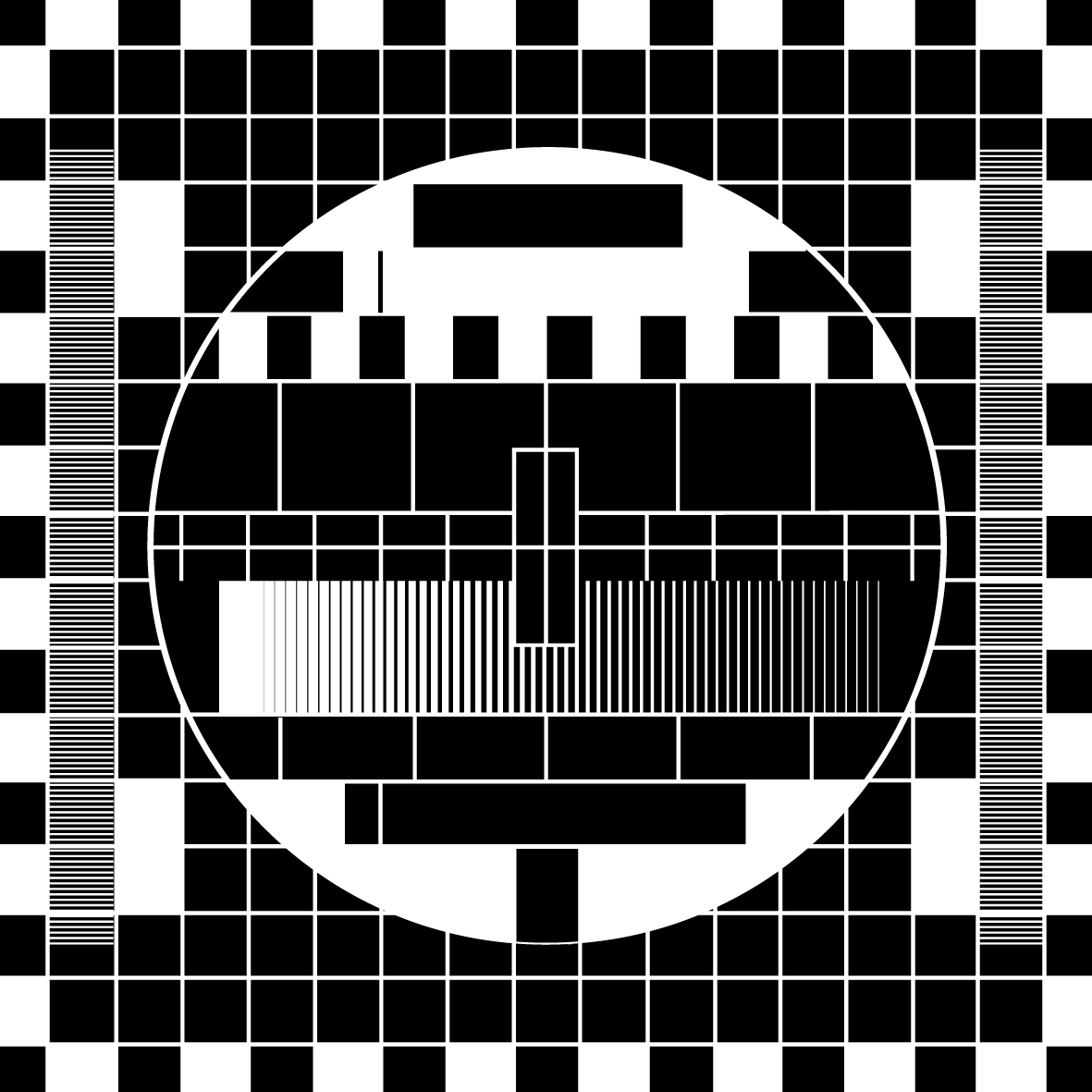
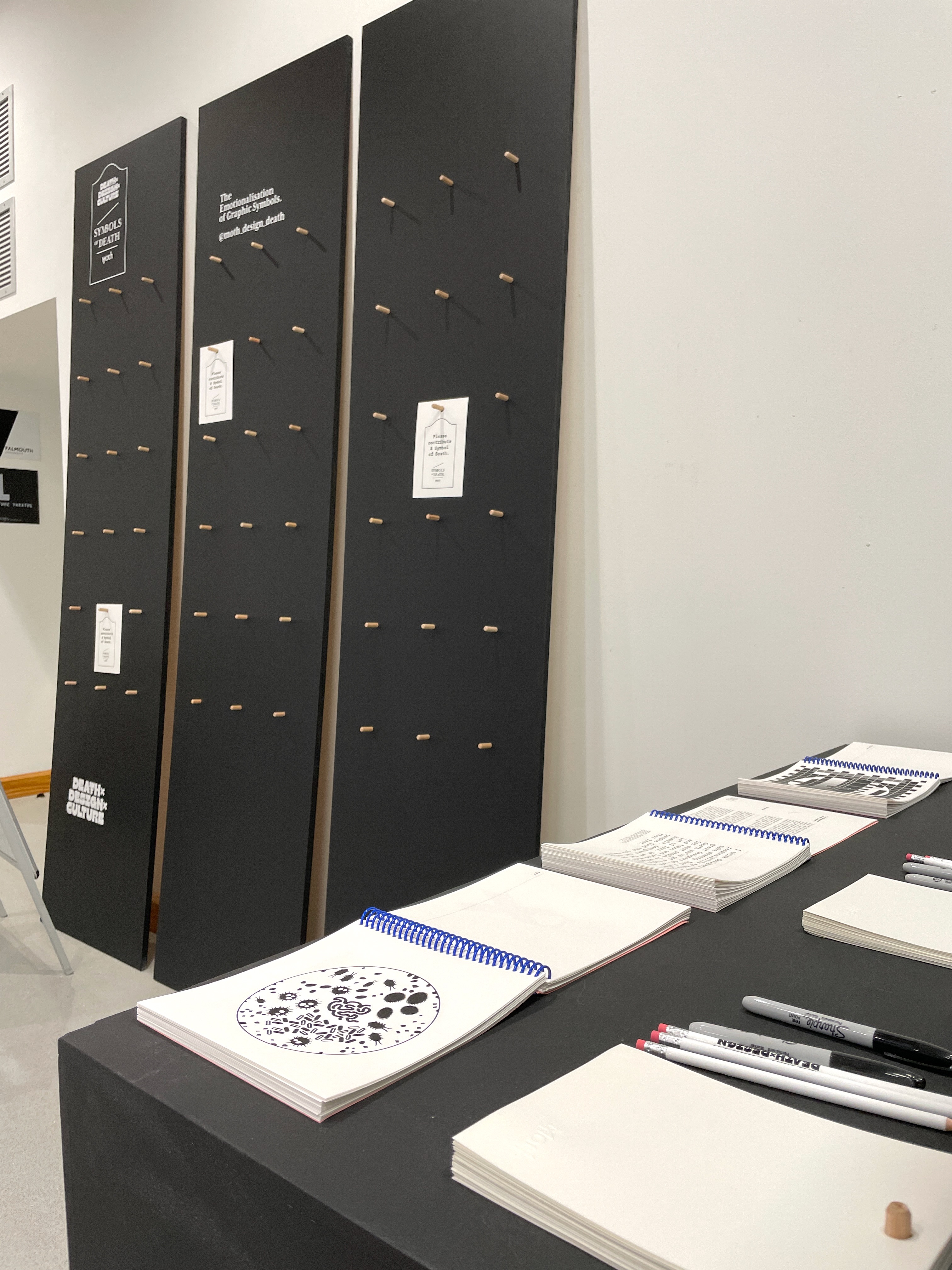

Goodbye Box
Product and Book designed by MOTH



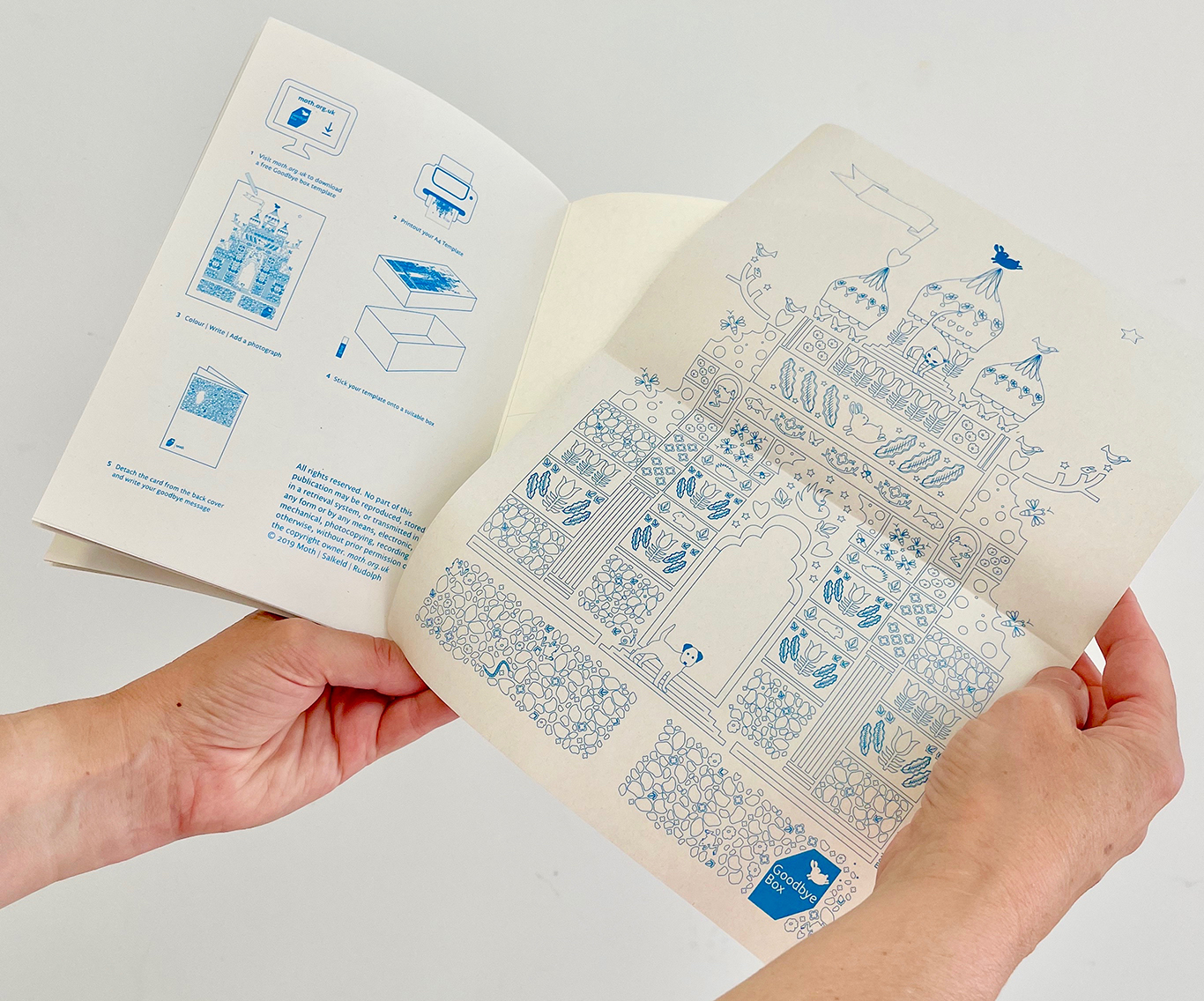
The Goodbye Box and story/advice book, ‘Saying Goodbye to Mr Jim’ has been developed by MOTH as an aid to help children and adults cope with bereavement.
Death is a subject that children are often shielded from and many parents would like to be able to support and help children begin to understand and comes to terms with death, but can oftentimes find it difficult themselves to know where to begin. Whilst our natural instinct is to protect children from sadness, to be able to approach it together and see it as an opportunity to learn and understand (at an appropriate level for that child) is important. The opportunity to be able to say a ‘proper’ goodbye, although difficult is ultimately better than unanswered and confusing assumptions which children might come to without proper dialogue.
![]()
Death is a subject that children are often shielded from and many parents would like to be able to support and help children begin to understand and comes to terms with death, but can oftentimes find it difficult themselves to know where to begin. Whilst our natural instinct is to protect children from sadness, to be able to approach it together and see it as an opportunity to learn and understand (at an appropriate level for that child) is important. The opportunity to be able to say a ‘proper’ goodbye, although difficult is ultimately better than unanswered and confusing assumptions which children might come to without proper dialogue.
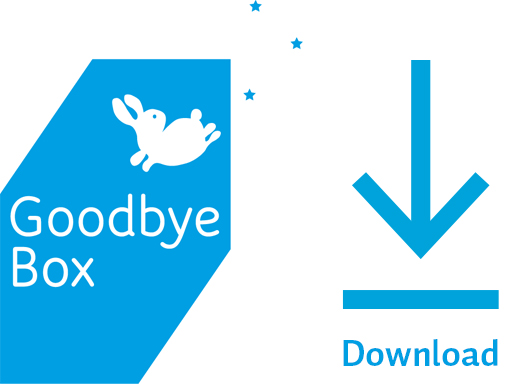
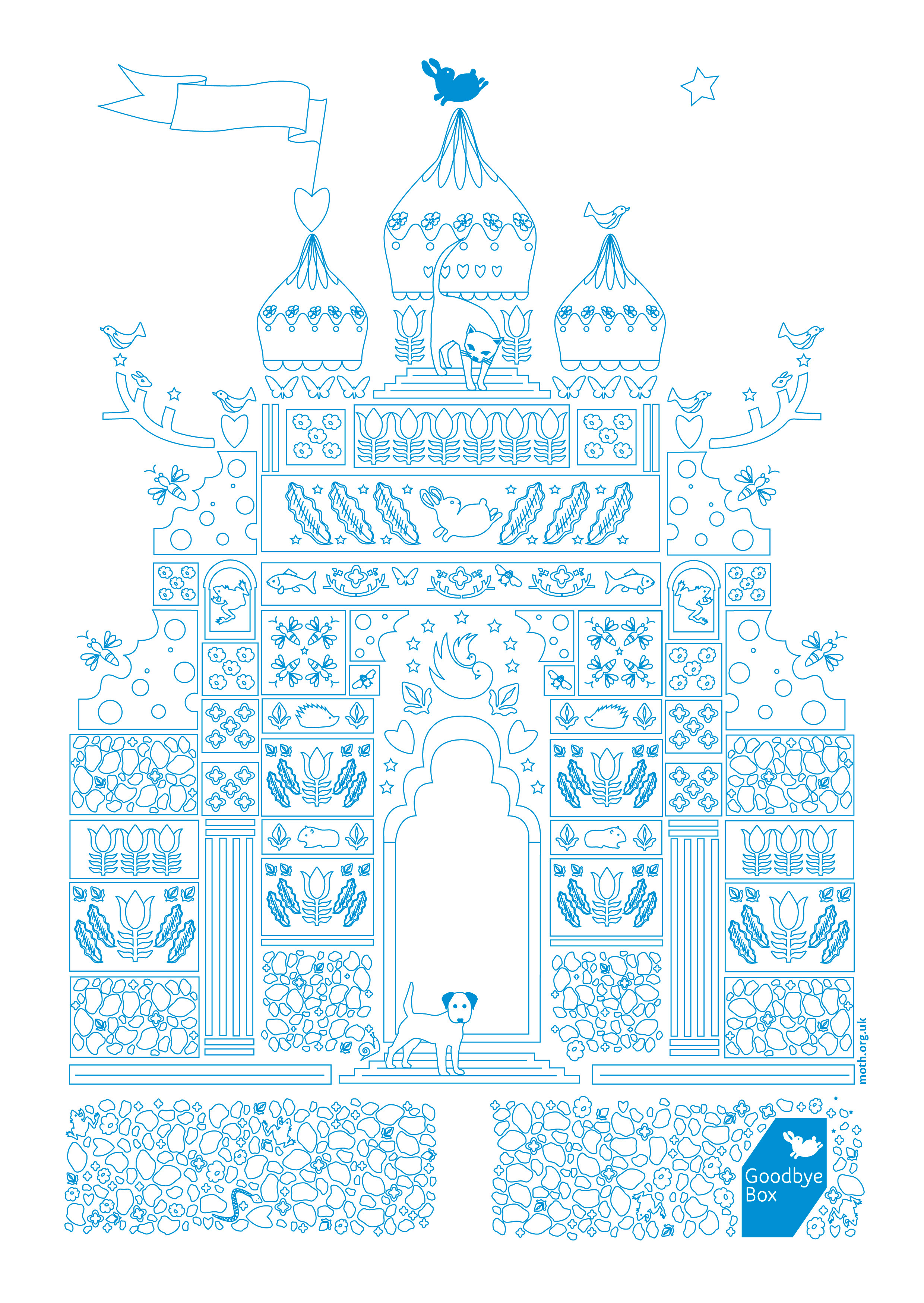
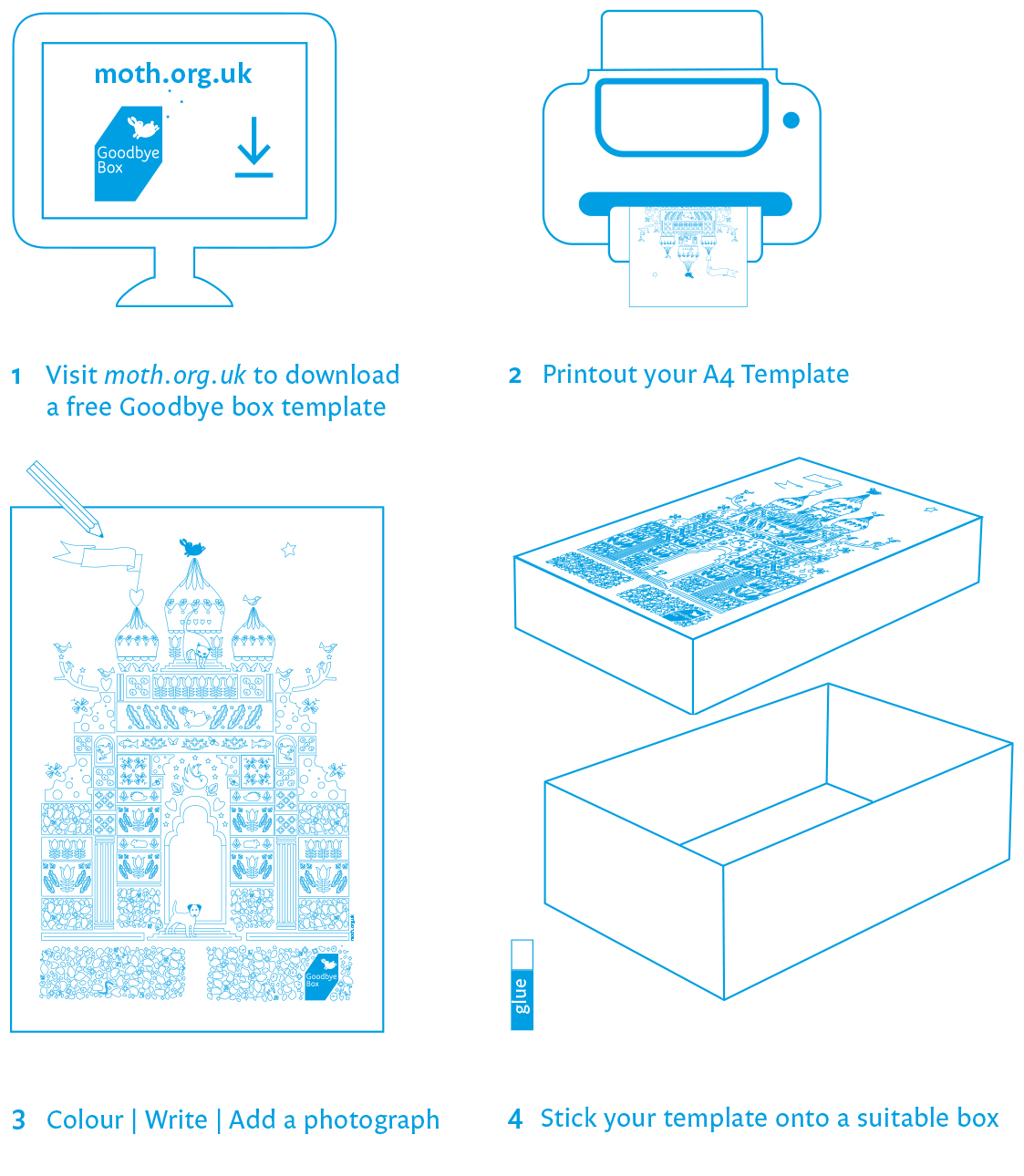

Saying Goodbye to Mr Jim Animation / Clip
Voice over: Maude Ridout Bond
Voice over: Maude Ridout Bond
All rights reserved. No part of this publication may be reproduced, stored in a retrieval system, or transmitted in any form or by any means, electronic, mechanical, photocopying, recording or otherwise, without prior permission of the copyright owner. moth.org.uk
© 2019 Moth | Salkeld | Rudolph
© 2019 Moth | Salkeld | Rudolph
In the Face of Death
In The Face of Death / The Art of Dying.
ANTI International Contemporary Art Festival
Kuopio, Finland.
2019
In The Face of Death
Augsburg, Germany & Falmouth, UK
2015/16
ANTI International Contemporary Art Festival
Kuopio, Finland.
2019
In The Face of Death
Augsburg, Germany & Falmouth, UK
2015/16


In The Face of Death / The Art of Dying.
30 Memento Mori vinyl images were placed in shop windows around the city centre of Kuopio – reminding us to live life well – to contemplate our relationship with death and what might happen to us, when the one inevitable event we plan for the least comes to visit?
In The Face of Death
Is a graphic system of symbols, creating meaningful and applied visual language. Initially exploring four immortality narratives as a vehicle to establish systems; Elixir; staying alive, life extension stories. Resurrection; life, death and rebirth, science, faith and fiction. Soul; the non-material part of the body that is ‘the real me’, and Legacy; cultural, genetic and meme. Opening windows for meaningful conversation, communication and connection with those around us that we love. To consider our life & death narratives and our own personal belief systems.
The 18th edition of ANTI – Contemporary Art Festival took place between 10th and 15th September 2019. Internationally celebrated, award-winning artists from around the world presented their projects in Kuopio, Finland.
The theme and focus for the 18th edition of ANTI – Contemporary Art Festival was Death. The programme traces various iterations of death in an attempt to open-up thinking around our relationship to it and to the many sets of phenomena that surround it. Ideas die, eras end, materials become obsolete, things break, technology supersedes itself, places are abandoned, the natural world is destroyed, social and political ideals are overthrown, and plant, animal and human life is finite.
In The Face of Death / The Art of Dying.
ANTI International Contemporary Art Festival
Kuopio, Finland.
http://antifestival.com
#MOTH_ANTI
In The Face of Death In a collaborative project between Falmouth University and Augsburg University of Applied Sciences, entitled In the face of death communication students were asked to design a graphic system of symbols, creating meaningful and applied visual language to print, artifacts, digital and social media platforms. It focused on ideas and beliefs at the end of life, (the moment at which we die) and the consequences of that. The project used four immortality narratives as a vehicle to establish systems; Elixir; staying alive, life extension stories. Resurrection; life, death and rebirth, science, faith and fiction. Soul; the non-material part of the body that is ‘the real me’, and Legacy; cultural, genetic and meme.
30 Memento Mori vinyl images were placed in shop windows around the city centre of Kuopio – reminding us to live life well – to contemplate our relationship with death and what might happen to us, when the one inevitable event we plan for the least comes to visit?
In The Face of Death
Is a graphic system of symbols, creating meaningful and applied visual language. Initially exploring four immortality narratives as a vehicle to establish systems; Elixir; staying alive, life extension stories. Resurrection; life, death and rebirth, science, faith and fiction. Soul; the non-material part of the body that is ‘the real me’, and Legacy; cultural, genetic and meme. Opening windows for meaningful conversation, communication and connection with those around us that we love. To consider our life & death narratives and our own personal belief systems.
The 18th edition of ANTI – Contemporary Art Festival took place between 10th and 15th September 2019. Internationally celebrated, award-winning artists from around the world presented their projects in Kuopio, Finland.
The theme and focus for the 18th edition of ANTI – Contemporary Art Festival was Death. The programme traces various iterations of death in an attempt to open-up thinking around our relationship to it and to the many sets of phenomena that surround it. Ideas die, eras end, materials become obsolete, things break, technology supersedes itself, places are abandoned, the natural world is destroyed, social and political ideals are overthrown, and plant, animal and human life is finite.
In The Face of Death / The Art of Dying.
ANTI International Contemporary Art Festival
Kuopio, Finland.
http://antifestival.com
#MOTH_ANTI
In The Face of Death In a collaborative project between Falmouth University and Augsburg University of Applied Sciences, entitled In the face of death communication students were asked to design a graphic system of symbols, creating meaningful and applied visual language to print, artifacts, digital and social media platforms. It focused on ideas and beliefs at the end of life, (the moment at which we die) and the consequences of that. The project used four immortality narratives as a vehicle to establish systems; Elixir; staying alive, life extension stories. Resurrection; life, death and rebirth, science, faith and fiction. Soul; the non-material part of the body that is ‘the real me’, and Legacy; cultural, genetic and meme.







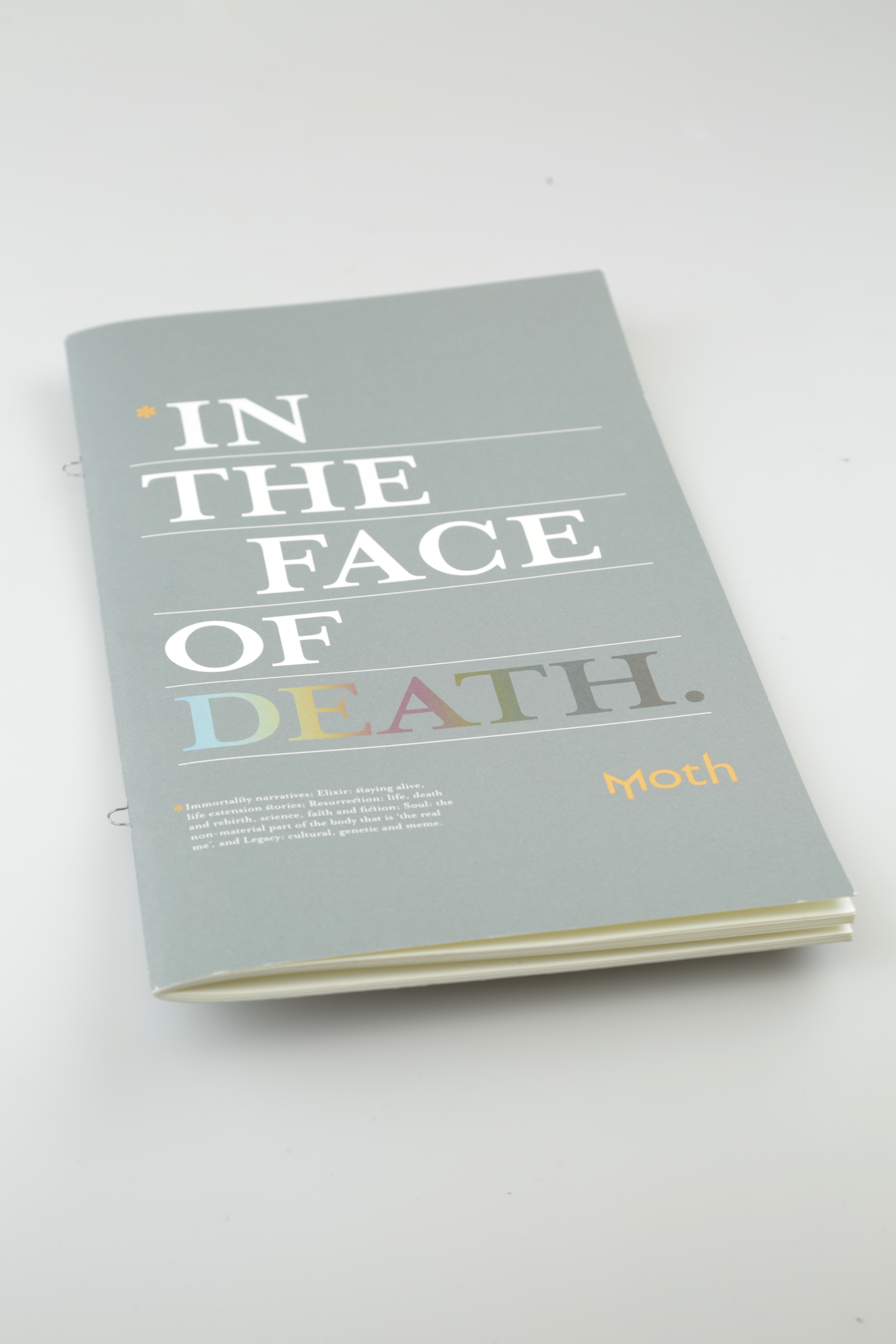

An Extra place at the Table
How food and funeral feasting can positively impact and
disseminate creative exchange around mourning,
bereavement and end of life choices?
An Extra Place at the Table
/ 01. Epitaph. Anna Kiernan
/ 02. Publication. ‘Dining with the Dead’. Dr Elsa Richardson
/ 03. Event. Experience Design at the End of Life. Clare Hearn
/ A dining event, with a curated menu to revive and disseminate information referencing funeral foods and feasting rites from social, historical, cultural and ‘magical’ (folklore) perspectives. Reclaiming a personal relationship and greater understanding with the people and place in which we live, work and die together.
![]()
disseminate creative exchange around mourning,
bereavement and end of life choices?
An Extra Place at the Table
/ 01. Epitaph. Anna Kiernan
/ 02. Publication. ‘Dining with the Dead’. Dr Elsa Richardson
/ 03. Event. Experience Design at the End of Life. Clare Hearn
/ A dining event, with a curated menu to revive and disseminate information referencing funeral foods and feasting rites from social, historical, cultural and ‘magical’ (folklore) perspectives. Reclaiming a personal relationship and greater understanding with the people and place in which we live, work and die together.


AN EXTRA PLACE AT THE TABLE, examines how through food and funeral feasting rituals, the bereaved can be comforted in the knowledge that this life defining moment, which we typically prepare for the least, can feel purposeful and positive, empowering us to take control and create the best and most personal ‘goodbye’ for loved ones. Loss needs to be mourned, acceptance of sadness is a natural and necessary part of a maturing process, reducing stress, anxiety and depression in the surviving relatives.
This forms the first stage of a bigger research project which aims to create dining events, with curated menus to revive and disseminate information referencing funeral foods and feasting rites from social, historical, cultural and ‘magical’ (folklore) perspectives. Reclaiming a personal relationship and greater understanding with the people and place in which we live, work and die together. Prompted by discussions around the food narratives, which are presented and eaten, along with questions, readings, sound/music/moving image and dining artefacts.
Food and feasting is important at every event and milestone in life; preparing food and the act of sitting and eating together can help to heal, resolve, share and shape experience. It can nourish us emotionally and physically, it can be symbolic, evoke memory, draw on historical, cultural and traditional sources, to help us find meaning and come to terms with life and death events. As a means of communication, food expresses our social relationships, it acts as messenger, encoded with meanings and narratives. Food can offer us a sense of identity and belonging, kinship and ritualistic comfort. It can evoke collective memory and experience, the very act of eating gives affirmation of life itself.
This forms the first stage of a bigger research project which aims to create dining events, with curated menus to revive and disseminate information referencing funeral foods and feasting rites from social, historical, cultural and ‘magical’ (folklore) perspectives. Reclaiming a personal relationship and greater understanding with the people and place in which we live, work and die together. Prompted by discussions around the food narratives, which are presented and eaten, along with questions, readings, sound/music/moving image and dining artefacts.
Food and feasting is important at every event and milestone in life; preparing food and the act of sitting and eating together can help to heal, resolve, share and shape experience. It can nourish us emotionally and physically, it can be symbolic, evoke memory, draw on historical, cultural and traditional sources, to help us find meaning and come to terms with life and death events. As a means of communication, food expresses our social relationships, it acts as messenger, encoded with meanings and narratives. Food can offer us a sense of identity and belonging, kinship and ritualistic comfort. It can evoke collective memory and experience, the very act of eating gives affirmation of life itself.
This project took place over a period of four weeks working collaboratively with 20 second year undergraduate students. There were three parts to the brief and at each stage of the project we worked alongside a writer, cultural historian and an experience designer.
01. Epitaph. Anna Kiernan a writer and editor who divides her time between academic life and consultancy work for agencies within the creative and cultural industries. At the time Anna was a Senior Lecturer in the School of Writing and Journalism at Falmouth University.
02. Publication. Dr Elsa Richardson who currently holds a Chancellor’s Fellowship in the History of Health and Wellbeing at the Centre for the Social History of Health and Healthcare (CSHHH) at the University of Strathclyde. Working at the intersection between the medical and cultural history, her research considers the relation of heterodox practices, beliefs and movements to mainstream society and culture, with particular focus on the interaction between medicine and the imagination, science and the supernatural, psychology and the occult. Victorian spiritualist movement. It looks at consumption within the seance, by the living and the dead, as a way of thinking about death/corporeality/spirituality/domesticity.
03. Event. Clare Hearn is Senior Lecturer in Business and Experience Design. She leads on MA Creative Events Management, a new digital international postgraduate programme, and teaches on BA(Hons) Creative Events Management.
01. Epitaph. Anna Kiernan a writer and editor who divides her time between academic life and consultancy work for agencies within the creative and cultural industries. At the time Anna was a Senior Lecturer in the School of Writing and Journalism at Falmouth University.
02. Publication. Dr Elsa Richardson who currently holds a Chancellor’s Fellowship in the History of Health and Wellbeing at the Centre for the Social History of Health and Healthcare (CSHHH) at the University of Strathclyde. Working at the intersection between the medical and cultural history, her research considers the relation of heterodox practices, beliefs and movements to mainstream society and culture, with particular focus on the interaction between medicine and the imagination, science and the supernatural, psychology and the occult. Victorian spiritualist movement. It looks at consumption within the seance, by the living and the dead, as a way of thinking about death/corporeality/spirituality/domesticity.
03. Event. Clare Hearn is Senior Lecturer in Business and Experience Design. She leads on MA Creative Events Management, a new digital international postgraduate programme, and teaches on BA(Hons) Creative Events Management.
Good Grief
Falmouth, UK
2018
Collaborators: Charlotte Heal | Graphic Designer and Art Director.
Michael Petry | Artist, author, and Director of the Museum of Contemporary Art (MOCA) London.
2018
Collaborators: Charlotte Heal | Graphic Designer and Art Director.
Michael Petry | Artist, author, and Director of the Museum of Contemporary Art (MOCA) London.
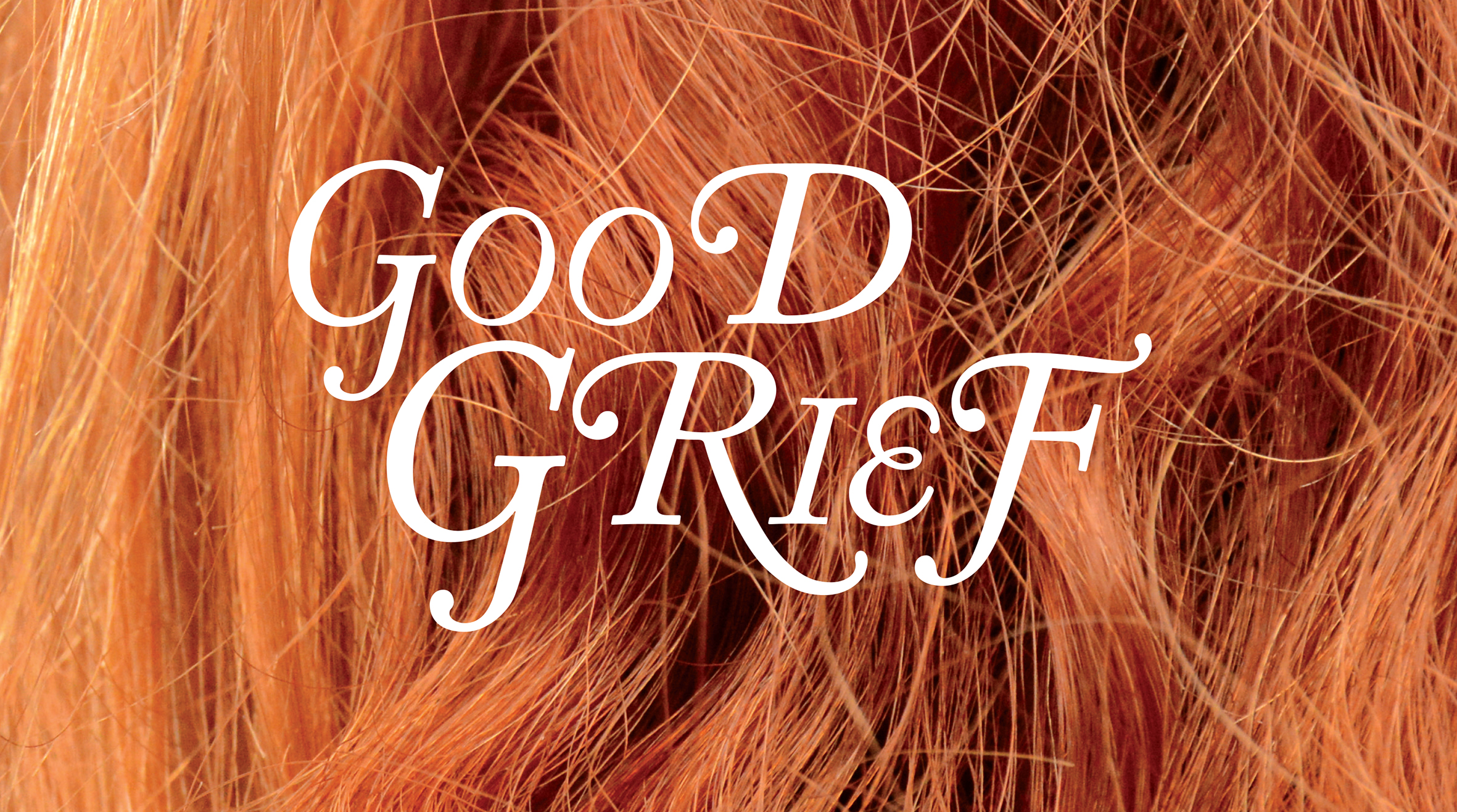
Good Grief investigated the aesthetics of mortality through the conventions of Still Life: Collections, Classification & Curation, and Ars Moriendi: The Art of Dying (well) & Magical Thinking.
How in a largely secular society can we be better equipped to discuss and facilitate bereavement? To understand that the expression of grief and mourning is an essential process to help to heal and begin to seek personal resolution. As communication designers, how can we use ‘our magical thinking’ through innovation and collaboration, to create products, services, brands and interventions to change behaviour and interrupt conventions.
Project_01. Collections, Classification & Curation
Start a Collection, archive & curate 20 objects in 2 days.
Project_02. A Still Life in 100 Objects
In collaboration with Michael Petry, we examined the aesthetics of the Still Life tradition and explored identity and legacy through collections, classification & curation of objects. We explored how objects have histories that shape us in particular ways and how during stages of our lives we continue to search for objects that we can experience as both within and outside the self.
Project_03. Ars Moriendi: The Art of Dying & Magical Thinking
Working with Charlotte Heal, we examined the potential benefits of engaging with the mourning process to externalize grief and to aid transition through bereavement. How design can create opportunities: services, products, platforms to re-consider conventions and future think how mourning, in (a largely secular) contemporary
How in a largely secular society can we be better equipped to discuss and facilitate bereavement? To understand that the expression of grief and mourning is an essential process to help to heal and begin to seek personal resolution. As communication designers, how can we use ‘our magical thinking’ through innovation and collaboration, to create products, services, brands and interventions to change behaviour and interrupt conventions.
Project_01. Collections, Classification & Curation
Start a Collection, archive & curate 20 objects in 2 days.
Project_02. A Still Life in 100 Objects
In collaboration with Michael Petry, we examined the aesthetics of the Still Life tradition and explored identity and legacy through collections, classification & curation of objects. We explored how objects have histories that shape us in particular ways and how during stages of our lives we continue to search for objects that we can experience as both within and outside the self.
Project_03. Ars Moriendi: The Art of Dying & Magical Thinking
Working with Charlotte Heal, we examined the potential benefits of engaging with the mourning process to externalize grief and to aid transition through bereavement. How design can create opportunities: services, products, platforms to re-consider conventions and future think how mourning, in (a largely secular) contemporary
